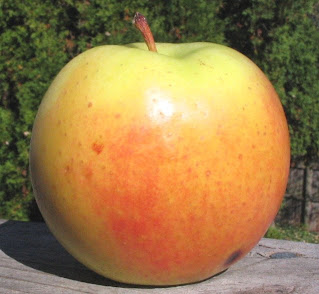Gold Rush originated at the Purdue Horticulture Research Farm in West Lafayette,
Indiana, where it was named "GoldRush" in honor of (1) its color, (2) a
purported "rush" of flavor, and (3) some goofy marketing theory that says if you
jam two words together and capitalize letters in the middle, more people will
buy the apple.
Sorry guys, but nobody calls it that, and it is a tribute to the actual
qualities of this variety, not your marketing acumen, that people like it enough
to reinterpret the name back into English.
Gold Rush is a medium-sized ribbed apple with waxy yellow skin (tinged with
green) flecked with dark lenticels. A light bronze blush shows where the sun has
been.















